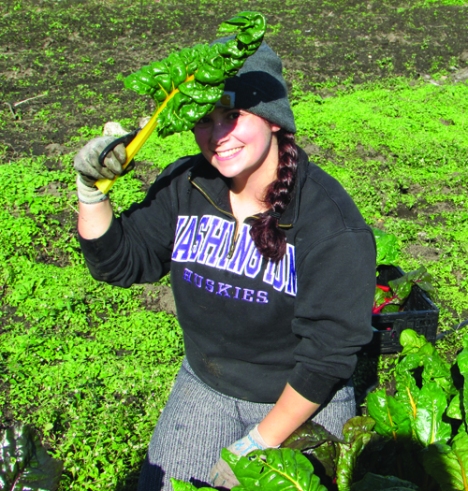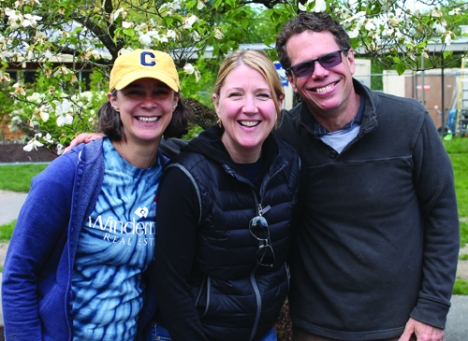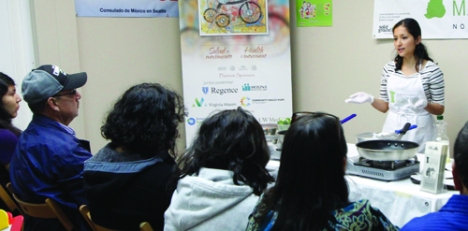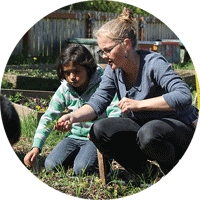Solid Ground’s print newsletter highlights lots of great partnership and program activities. Sign up here to receive the entire newsletter by snail mail!
PARTNER SPOTLIGHT: The CoHo Team of Windermere Agents
Not your average real estate agents, The CoHo Team of Windermere Agents has a unique vision: They believe that home – a place of shelter, a vibrant neighborhood and community, a sense of safety and belonging – should be obtainable by all. To help make this a reality in our community, they contribute both significant funds and hands-on service hours to nonprofits like Solid Ground that are involved in housing and community development.
“We have been proud to support Solid Ground for over 12 years as donors and volunteers,” says Team member Tonya Hennen. “We love their local, grassroots approach and broad spectrum of services, particularly their work in developing housing. We appreciate how they leverage many partnerships to the support of their clients. Few organizations are ambitious enough to claim the mission of the eradication of poverty through dismantling institutions of racism and oppressions. They really walk their talk. You go, Solid Ground!”
Thank you, CoHo Team, for your committed partnership!
For more info on partnering with Solid Ground, please contact us at 206.694.6803 or development@solid-ground.org.
PROGRAM NEWS: From the Ground Up
From transitional to permanent supportive family housing
For families living on low incomes that include an adult living with disabilities, affordable housing can be nearly impossible to find, let alone keep. Many families on fixed incomes essentially live from crisis to crisis. King County’s homeless services system identified the need to create more capacity to provide long-term housing for families with disabilities who are experiencing homelessness.
Solid Ground’s Sand Point Family Housing is among the initial group of five area transitional housing providers to convert to permanent supportive family housing. Changes coming to the program include round-the-clock staffing to help residents overcome a more complex set of challenges, and support for families in long-term stable housing. Increasing partnerships will bring more support services onto campus.
Case workers and housing advocates are working with current tenants – all of whose leases will expire before the program conversion – to secure long-term housing. But because of the changing program model, few if any will be eligible to remain at Sand Point Family Housing.
Cooking on all burners
Our Cooking Matters nutrition educators completed 13 class series in the third quarter! The classes, which focus on preparing healthy, culturally appropriate meals on a budget, were hosted by a variety of community organizations – including five at Low Income Housing Institute (LIHI) locations and two in Toppenish, WA through our satellite partner, the Quinault Indian Nation.
Our own Seattle Community Farm recently cohosted a six-week series for teens affiliated with the Refugee Women’s Alliance (ReWA). Other new satellite partners include Verdant Wellness Center in Lynnwood, which hosted their first Spanish Cooking Matters class in October, and Hopelink, a fellow King County Community Action Agency, which will host classes at their five Eastside locations starting in early 2016.
Financially fit
Our Financial Fitness Boot Camp was selected by The Financial Clinic of New York City to partner on the launch of a new financial skills coaching platform, recognizing Solid Ground’s leadership in financial empowerment education and services.
SPECIAL RECOGNITION: Brilliance… Kindness… & Persistence…
- Thanks to Premera Blue Cross for sponsoring Your Passport to the World of Volunteering, featuring our RSVP (Retired & Senior Volunteer Program) and 23 of their site partners promoting King County volunteer opportunities.
- The Master Builders Association selected Sand Point Family Housing for their Painting a Better Tomorrow project. As we go to press, 150 Master Builders volunteers are painting the rooms and common areas of these two historic naval buildings to freshen up the apartments.
- Sometimes, food justice starts with access to seeds to grow your own food. Lettuce Link offers a tip of the Swiss chard hat to seed donors Burpee, Good Seed Company, Molbak’s Garden + Home, Neighbor Sally’s Nursery, Park Seed, PCC Natural Markets (Headquarters & U District), Seattle Seed Company and Sky Nursery.

Who needs a visor when you have Swiss chard? Dani Ladyka, one of our new crop of Apple Corps members, finds a bit of shade at the Marra Farm Giving Garden. (Photo by Madeline Corbin)
- And a muddy salute to all of the organizations who brought volunteers to Lettuce Link’s Seattle Community Farm and Marra Farm Giving Garden. Your hard work helped people who need it get healthy, nutritious food: Cascadia Montessori, CDK Digital Marketing, Community Court, Concord International School Teachers, Ethan Stowell Restaurants, Expedia, Friends of Youth, International Community School, Overlake School, Pepperdine University Alum, Plymouth Healing Communities, Seattle Works, Starbucks, The World Is Fun, T-Mobile and United Way.
TAKE ACTION: Get Involved!
- What will your legacy be? Find out how you can continue to fight for social justice long after you’re gone. For information on how to include Solid Ground in your will or estate plans, please contact Leah Lee at leahl@solid-ground.org or 206.694.6852.
- For Volunteer Opportunities at Solid Ground, contact volunteers@solid-ground.org or 206.694.6825.
Filed under: Groundviews | Tagged: partnerships | Leave a comment »





































